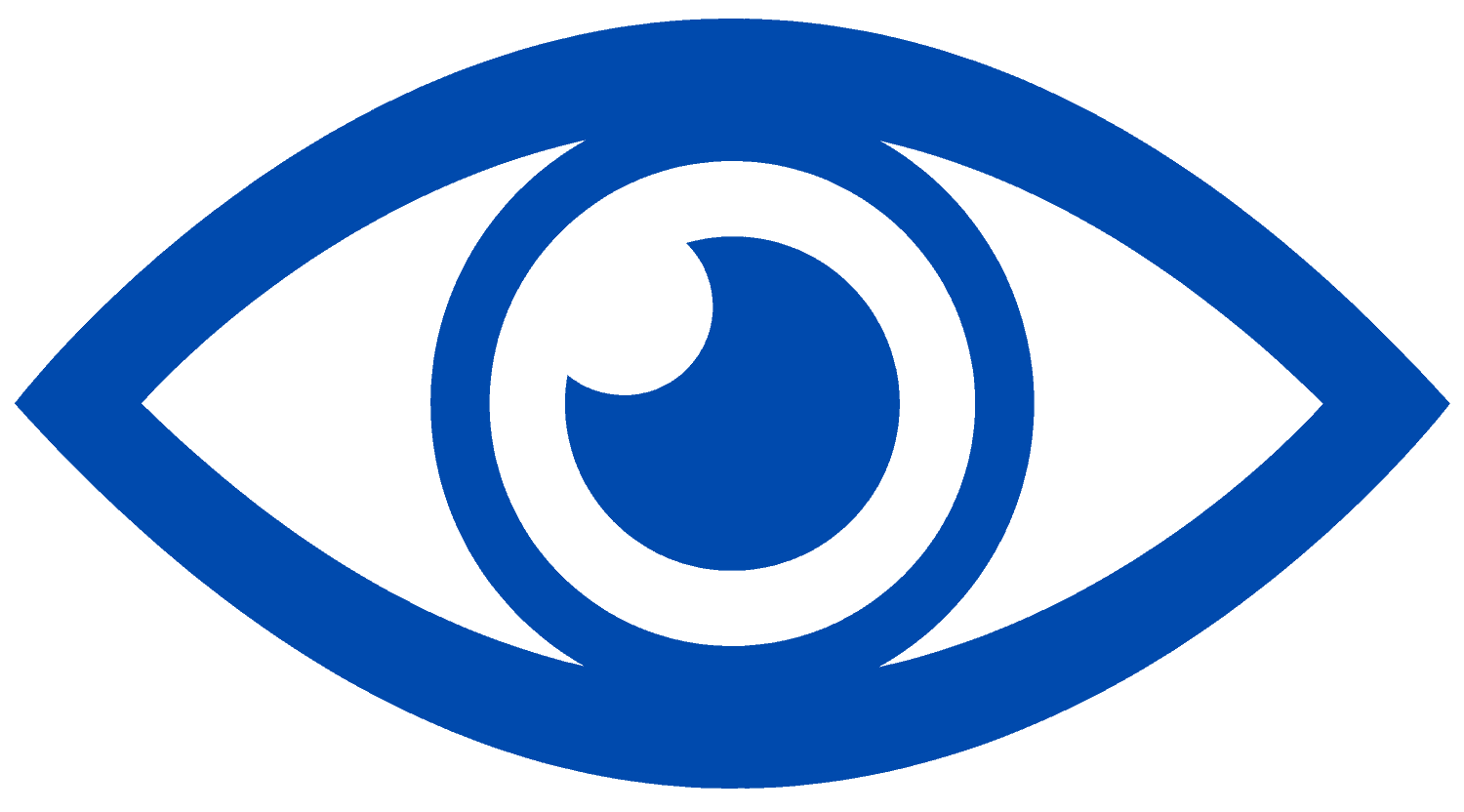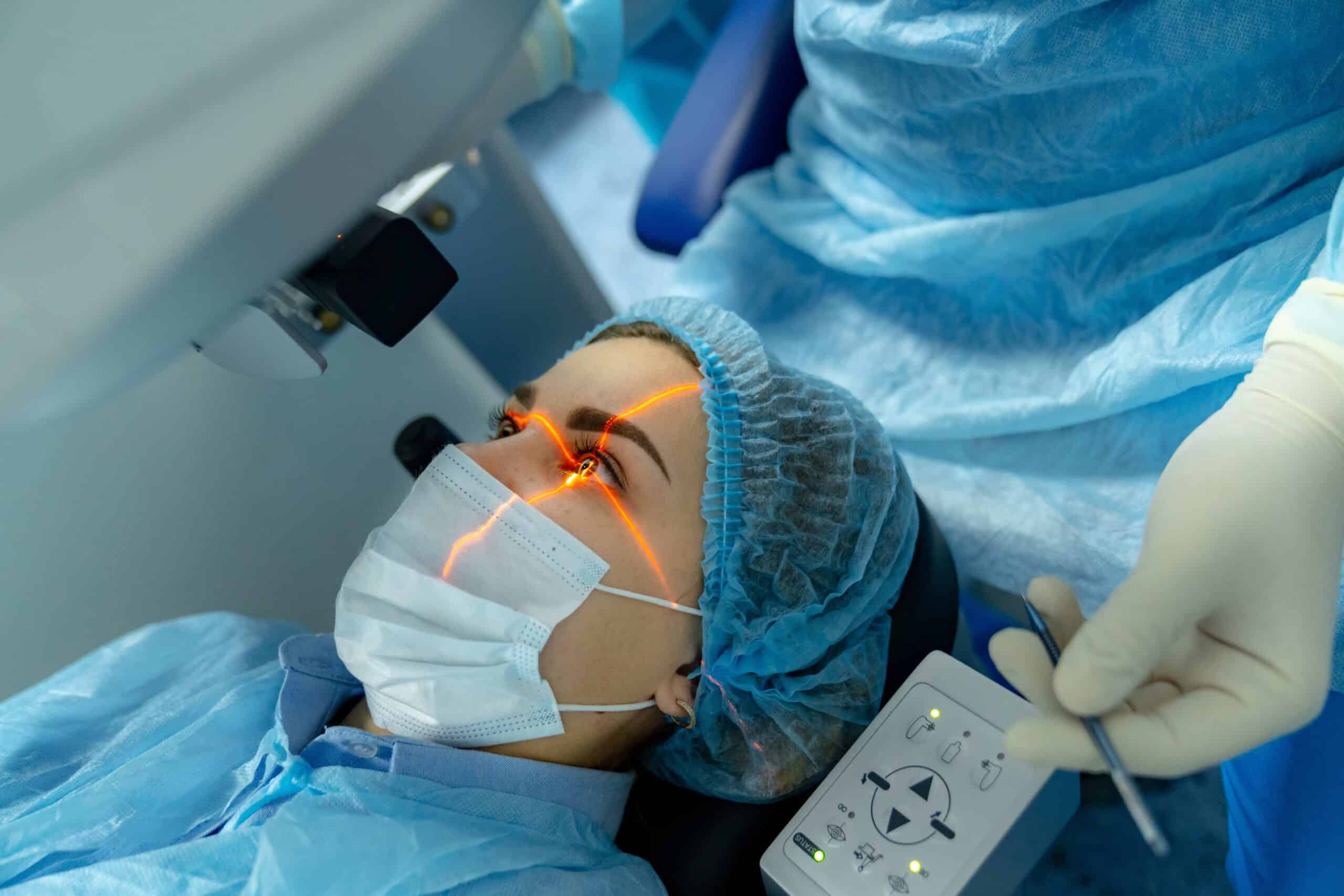Laser vision correction, also known as laser eye surgery, is generally considered to be a safe and effective way to correct vision problems such as nearsightedness, farsightedness, and astigmatism. However, as with any medical procedure, there are some risks and potential complications. These can include infection, dry eyes, halos or glare around lights, and under or over correction of the vision. So how does a refractive surgeon minimise the risk for their patients?
- Pre-treatment testing – This step is crucial for optimising outcomes.
There are several tests that are typically performed before laser vision correction to determine a person’s eligibility and the appropriate procedure for their individual needs. These tests may include:
- Refraction: This test measures the eye’s ability to focus light and is used to determine the person’s prescription for glasses or contact lenses.
- Corneal mapping: This test uses a special instrument to create a detailed map of the cornea, which is the clear front surface of the eye. This information is used to plan the laser surgery and ensure the best possible outcome.
- Pupil dilation: This test involves dilating the pupils with eye drops to allow the eye doctor to examine the back of the eye and check for any underlying eye problems that may affect the laser surgery.
- Glaucoma test: This test checks for increased pressure inside the eye that can be caused by a condition called glaucoma.
- Visual acuity: This test measures how clearly a person can see at different distances.
- Keratometry: This test measures the curvature of the cornea, which is used to calculate the appropriate treatment for the individual.
These are some of the most common tests that are performed before laser vision correction, but the specific tests may vary depending on the individual’s eye condition, the type of laser surgery, and the surgeon’s preference.
2. Laser technology
New cars have adaptive cruise control, blind spot monitoring, self-parking and even self-driving capability. Has laser technology made similar progress? The answer is a resounding yes!
Eye tracking technology is a feature that can be integrated into an excimer laser system to improve the precision and accuracy of LASIK (laser-assisted in situ keratomileusis) surgery. The eye tracking system uses a camera and advanced algorithms to monitor the patient’s eye movement during the procedure and make real-time adjustments to the laser beam accordingly.
The excimer laser emits ultraviolet light to precisely remove a small amount of corneal tissue in order to reshape the cornea and correct the patient’s vision. However, when a patient moves their eye during the procedure, the laser beam would not be able to follow the movement, leading to inaccuracies and errors.
The eye tracking system solves this problem by continuously monitoring the position of the patient’s eye and adjusting the laser beam in real-time to ensure it is always focused on the correct area of the cornea. This allows the surgeon to maintain a high level of precision throughout the procedure, reducing the risk of complications and improving the chances of a successful outcome.
Overall, Eye tracking technology allows for a more precise, accurate and reliable excimer laser LASIK procedure.
3. Increased treatment choices– It is important to note that every patient’s eye is different and what may be the best choice for one person may not be the best choice for another. The ever expanding list of refractive options allows a more tailored approach. Examples of these options include:
- PRK (photorefractive keratectomy): This procedure is similar to LASIK, but instead of creating a flap in the cornea, the surface of the cornea is removed using a laser. This results in a longer recovery time but it is considered to be safer for patients with thinner corneas.
- Epi-LASIK: This procedure is similar to PRK, but instead of removing the surface of the cornea, a thin layer of the cornea is lifted, and the laser is applied to the underlying tissue. This technique is less invasive than PRK, and the recovery time is shorter.
- LASEK (laser-assisted subepithelial keratectomy): This procedure is similar to LASIK and PRK, but instead of removing the surface of the cornea, only a thin layer of the cornea is removed and then repositioned. Recovery time is similar to that of PRK.
- SMILE (small incision lenticule extraction): A procedure that uses a femtosecond laser to create a small incision in the cornea and extract a small piece of tissue from the cornea, which reshape it to correct the refractive error.
- Phakic IOLs: This is a refractive surgery option that involves implanting an intraocular lens (IOL) inside the eye to correct vision. This option is typically reserved for patients who are not good candidates for LASIK or PRK.
The bottom line is that laser eye surgery is safe and there is no longer any reason why a person has to put up with the burden of glasses and contact lenses.



